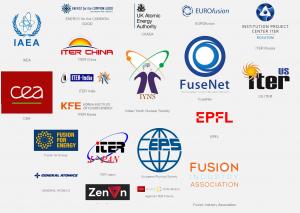A new one-stop shop for fusion education materials
The ITER Organization and a group of global partners has launched INFUSED—the International Fusion Education Initiative. The program curates quality fusion education materials and makes them available to interested students, educators and members of the public.
The race to make fusion a reality is a multinational endeavour, with increasing numbers of public and private ventures in North America, Europe and Asia joining publicly funded laboratories across the world. The earlier fusion can be introduced into the classroom, ITER and its partners are convinced, the greater chance that a sufficient pool of highly trained physicists and engineers will be available to design, build, and operate the fusion power plants of the future.
The goal of INFUSED is to ensure that teachers and students have access to a rich variety of global fusion educational materials. The resources, continually updated, will help to prepare students for careers in plasma physics, electromagnetic engineering, robotics, or dozens of other disciplines that will be needed to support the global fusion enterprise.
"INFUSED reflects the original understanding of Ronald Reagan and Mikhail Gorbachev in 1985—when they launched their proposal for broad international cooperation on hydrogen fusion research that became the ITER Project in 2006—that fusion energy should be for the benefit of all humankind," says ITER Director-General Bernard Bigot. "[...] But as we look to the future, we want to inspire young people from every nation to join the fusion quest."
The INFUSED homepage on the ITER website offers an array of materials ranging from lectures and massive open online courses (MOOCs) to instructional videos, virtual tours, games, and even do-it-yourself projects. The program benchmarks the fusion materials available for different target groups—educators, students, policy makers, environmental enthusiasts, and the simply curious. ITER catalogues the material and makes it easily searchable by audience, by content type, by source, and by language. Materials are available in 11 languages—a figure that is likely to rise as a "virtuous circle" is created between the contributors to INFUSED and users.
"Fusion is our chance to leave a better energy legacy to our children," says Laban Coblentz, Head of Communication at ITER. "The more we can get teachers to talk about fusion, the more we can inspire young fusion leaders. The more we can motivate students to join master's and PhD programs, the better off we'll be in the coming decades."
An example of an INFUSED partner is Energy for the Common Good (ECG), a US-based NGO whose self-declared mission is to prepare leaders in energy, environmental regulation, and policy to bring fusion energy to the grid "soon enough to make a difference." Jane Hotchkiss, the co-founder and president, sees education as a central element of this mission.
"At ECG, we are building a voice for fusion energy," Hotchkiss says. "We engage with regulatory bodies and policymakers—so that when fusion is ready for deployment it can be received. We will need an army of fusion engineers in the future, so central to our vision is the urgent development of a fusion-based educational clean energy curriculum for middle and high school students."
To develop this curriculum, Hotchkiss and her team are working with STEM Kings & Queens, a New-York-based team of young scientists devoted to cultivating diverse young minds that will shape the future. As their founder, Kayla Miller, explains: "STEM Kings & Queens provides STEM¹ as well as entrepreneurship educational enrichment for K-12 students of diverse and under-resourced backgrounds. Partnering with Energy for the Common Good, a non-profit advancing the acceptance of fusion energy, presents a unique opportunity for our students to learn about, innovate, and be advocates for this clean energy source. Our hope is that they will feel empowered to use their creativity in a way that positively impacts change for our climate and humanity."
Another example is Nirodha Ranasinghe, a Sri Lankan scientist who is inspired by the enormous promise of fusion. As part of the outreach program for the Radiation Protection & Technical Service Division of the Sri Lankan government, Ranasinghe writes about nuclear science and radiation physics on social media and gives lectures at universities.
"Fusion is a technology that no country can afford to ignore. I hope that someday Sri Lanka can play a role. I know it's a big step—but if we can teach our people about fusion, in the future they will be able to adopt it. And then when fusion is commercialized, we will have the required expertise, thanks to the actions we take now."
After researching what ITER was providing through articles, videos and social media, Ranasinghe found a receptive audience for translated fusion content. "Now when we do lectures online, we usually have more than 40,000 students attending," says Ranasinghe. "Sometimes I translate material into Sinhalese, one of the national languages of Sri Lanka, with a speaking population of about 16 million."
Most of his followers are university students. Others are professionals, usually with a scientific background, who want to know more about the promise of fusion energy.
"The INFUSED initiative is exactly what we need," says Ranasinghe. "I was especially interested to learn that the site includes input material to print a model of the ITER Tokamak. I have a 3D printer in my laboratory and am very eager to print out the ITER model. I know it will be very useful for our outreach program."
¹STEM is an acronym for the fields of science, technology, engineering and math.
To visit the INFUSED site, follow this link.
To contribute a resource, contact @email.


